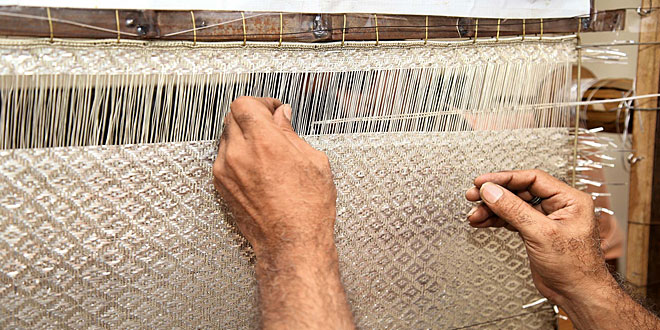Question: What were the countries and regions of the world that India traded with during the Medieval Age? Mention important items that were exported and imported.
Answer: India had a rich trade with other countries. A large number of coins from India have been recovered in Persia, China, Africa and other places, providing that trade was carried on between these regions and India.
- India’s exports far exceeded its imports both in the number of items and in the value of the goods. India’s main exports were spices, textiles, precious stones, ivory and articles with inlay works.
- The chief articles of import were horses (from Kabul and Arabia), dry fruits and precious stones, glassware fro Europe, high-grade textile like satin from West Asia and raw silk and porcelain from China.
- Foreign luxury goods were popular among the royalty and the nobility. These included wines, dry fruits, precious stones, scented oils, perfumes and velvets.
In Khambat, the volume of trade was such that 3000 ships visited this port annually. This fact gives a idea of the magnitude of India’s foreign trade during the Medieval period.
Question: Why was Hampi such an important town during medieval period? or Give a brief account of the greatness of Hampi in the Vijayanagar kingdom.
Answer: Hampi an important town:
- Hampi is situated on the bank of River Tungabhadra, in Karnataka. It was the capital of the mighty Vijyanagar Empire. It was chosen as the capital because of its strategic location. Hampi had Tungabhadra river on one side and was surrounded by cliffs on the other three sides.
- Hampi was an important centre of the cotton and spice trade.
- In fifteenth and sixteenth centuries, European merchants used to buy these goods from the rich markets of Hampi.
- Hampi also traded with Persia, Arabia, Burma (now Myanmar), China and numerous islands in Indian Ocean.
- Traders from faraway lands visited Hampi from time to time to buy and sell goods.
- Hampi was well fortified city. It also had many beautiful temples. The rulers used the money from trade to build temples.
- After the battle of Talikota, Hampi fell into decline. Trade continued but the town lost its importance.
Question: Trace the history of Masulipatnam as a centre of trade during the medieval period. Or What was Masulipatnam also known as. Describe the work it is famous for even today.
Answer: Masulipatnam is situated on the bank of river Krishna. It was founded in the fourteenth century. It was a port town. It was also called Machilipatnam because the gateway to the town was decorated with the eyes of a fish (Machili).
- Masulipatnam was a production centre of the fine chintz, which was in much demand in the markets of South-east Asia.
- Masulipatnam was and even today is famous for its Kalamkari work. The word Kalam means pen and Kari means work. It refers to a method of painting with natural and vegetable dyes on to cotton and silk fabric with a bamboo pen.
- Masulipatnam was a major trading center for Kalamkari textiles. These textiles were exported to the Safavid Empire in Persia.
Question: Write a summary on the significance of Surat as a port and a city of trade and craft in medieval India.
Answer: Surat:
- Surat, in Gujarat, is situated on the bank of River Tapti. It was an important port and trading town during the medieval period.
- Surat was a commercial town. According to Duarte Barbosa, ships from many countries docked at Surat.
- During the reign of the Mughals, Surat became a very important commercial city, famous for all types of textiles, particularly cotton textiles. Fine cotton with ‘Zari’ borders were produced by the craftsmen. These were exported to the markets in West Asia and Europe.
- The English set up a trading post in Surat in 1612. They were followed by the Dutch and the French
- The location of Surat also helped it to prosper. Ships carrying Haj pilgrims to Mecca set sail from here.
- Realizing its importance, the Portuguese merchants tried to control trade in Surat.
- Surat enjoyed great prosperity between the sixteenth and eighteenth centuries. Shivaji plundered it twice, in 1664 and 1670.
- With the decline of the Mughal Empire and the rise of Bombay (now Mumbai) as a major port and administrative centre, Surat declined in importance. Today Surat is a major centre of diamond trade.
Question: On what basis were towns classified? What do you understand by capital town?
Answer: There were many types of towns, classified on the basis of different functions each one performed. There were capital towns, temple towns, pilgrimage towns, craft towns, commercial towns and trading towns and so on.
For example: Hampi was the capital of Vijayanagar rulers, a center for trade in spice and cotton, and was also famous for its beautiful temples.
Capital Town: The place where kings held their court often developed into a town. These were also centres of administration. For example, first Agra, then Fatehpur Sikri and thereafter Lahore was the seat of Emperor Akbar. These places attract people from all over.
 Class Notes NCERT Solutions for CBSE Students
Class Notes NCERT Solutions for CBSE Students



I have a question – What does capital town means?
Good answer but I want answer of some other questions which I am not getting in my textbook
it is very good
What is the difference between pilgrimage towns and Temple towns?
Write a short note on these topic in points:
a) Vijayanagara Empire
b) Temple Towns
c) Ports centers
d) Administrative towns
e) Capital town